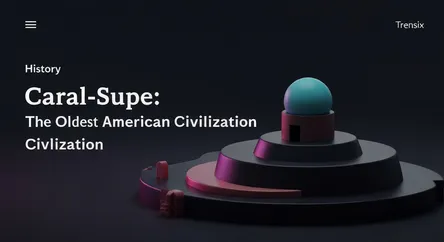History
Caral-Supe: The Oldest American Civilization

Discover the Caral-Supe, the oldest civilization in the Americas, which emerged in Peru over 5,000 years ago, rewriting our history.
What is it?
The Caral-Supe civilization, also known as Norte Chico, was a complex pre-Columbian society in the Supe River valley of Peru. Flourishing between 3500 and 1800 BCE, it is the oldest known civilization in the Americas. This ancient society developed contemporaneously with the Egyptian pyramids and Mesopotamian city-states. Its urban center at Caral featured sophisticated monumental architecture, including six large pyramidal structures, sunken circular plazas, and residential complexes. Remarkably, the society was pre-ceramic, lacking pottery, and no evidence of warfare, such as fortifications or weapons, has been found. They developed a system of record-keeping using knotted textiles known as quipus.
Why is it trending?
The Caral-Supe civilization is a major topic of interest because its discovery fundamentally altered the timeline of complex societies in the Americas, pushing it back by more than a thousand years. Previously, the Olmecs in Mesoamerica were considered the first civilization. The findings at Caral, extensively researched by archaeologist Ruth Shady since the 1990s, demonstrate that a large-scale, organized society with a complex government existed in South America far earlier than imagined. Recognized as a UNESCO World Heritage Site, Caral's advanced urban planning and peaceful, trade-based societal model challenge traditional theories on the development of early civilizations.
How does it affect people?
The existence of the Caral-Supe civilization profoundly impacts our understanding of human history. It establishes the region as one of the six places on Earth where civilization originated independently. This discovery proves that societies could evolve to great complexity based on trade and cooperation rather than conquest and warfare. For people today, Caral provides a unique window into an early form of urban life that prioritized community, ceremony, and commerce. Its architectural and social innovations, which influenced subsequent Andean cultures for millennia, offer valuable lessons on sustainable living and social organization.